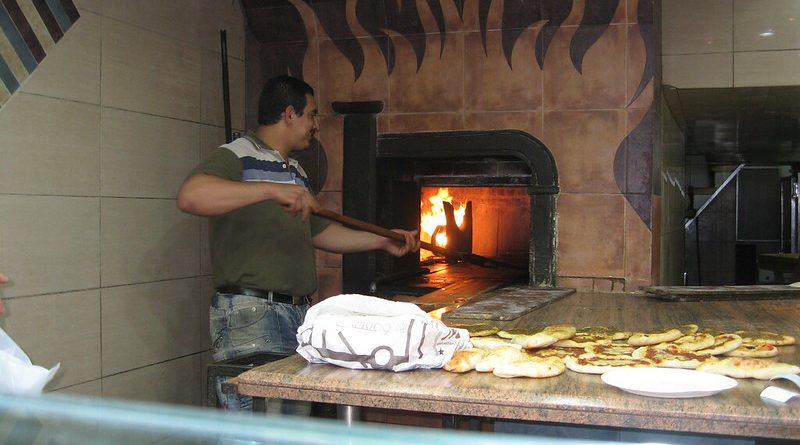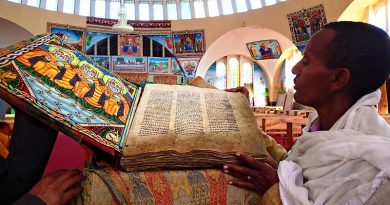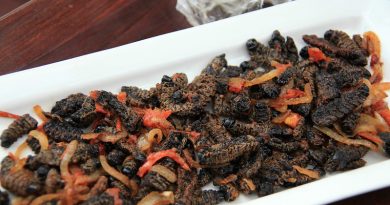Syrian Food: Four Courses of Heaven
Food Facts
Staples: Olives, dips, zesty salads, grilled chicken or lamb and syrupy sweet desserts.
Tastes: Fresh and healthy, with lots of variety. Form hot, tasty morsels of mezze to refreshing creamy yoghurt based dips. There’s something to suit all palates.
Best Dishes: Shawarma – delicious street meat or the Druze cousa (stuffed zucchini)
Serving Suggestion: A lively night with a Syrian family at home, mezes followed by salad, meat and tooth aching baklava desert. Enjoyed leisurely and sociably.
Damascenes are tremendously proud of their local food and are not big consumers of the food of other cultures – Chinese or Mexican, for example. There are a few ethnic restaurants in the large hotels, but most of the restaurant you’ll see in Damascus serve Syrian food. A few burger and pizza joints have popped up recently. Their interpretations of classic Western food are often amusing, but surprisingly tasty. You might find hamburgers that contain fried eggs or french fries. The Syrian interpretation of pizza, while probably not giving Chicago or Napoli a run for the money, is quite good. It’s got the usual array of ingredients – sausage (normally Sujuk), cheese, tomato sauce – but the seasoning are distinctly Arabic.
Visiting a Restaurant
There are many restaurants in Damascus serving traditional Syrian fare. Most of the time, there is no menu – so no worries about reading Arabic! You simply chose the type of meat you want – the most popular being lamb or chicken. Every meal you eat will include lots of flat bread call khubs (the Arabic word for bread).
The bread doubles as a utensil – for picking up bits of food – or a napkin, for discreetly wiping a bit of dip off your fingers. Western style cutlery is available, but it’s much more fun to eat “Arab style” grabbing bites of food with small pieces of bread. It is frowned upon to throw away all but the smallest pieces of bread, but this is a cultural habit that is more likely to be followed in private homes rather than in restaurants.
You see a lot of groups of families in restaurants – mum, dad and all the kids – and not so many small couple groups. Syrians seem to love to move around in large groups!
Nargilas, or Sheesha (smoking tobacco pipes), will often be enjoyed throughout the meal, seemingly as a sort of “palate cleanser” between courses. Live music is extremely popular in restaurants, everything from a single oud player playing quiet, traditional songs to a larger ensemble playing lively, loud pop-sounding tunes.
Eating at Home with a Syrian Family
Everyone eats together, men, women and children, in restaurants and homes. There’s none of the segregation of women that you may see in other Arab countries. The children seem to run free, but are surprisingly well behaved as they switch off clambering up into Mom and Dad’s lap alternately. Children are doted on, shown an incredible amount of affection, yet seem unspoiled, cheerful and extremely well mannered.
Eating at someone’s home, is likely to be very informal with everyone talking, laughing and dipping their spoons from serving dish to mouth! Of course the degree of fastidiousness and formality will vary depending on whether you are actually part of the family, or an honoured guest.
4 Courses of Heaven
At a restaurant or home, you’ll likely start with an array of mezze (appetizers) which could include hummus (chick pea dip), baba ganoush (eggplant and yoghurt dip) – often freshly made and delicious, a variety of zaytuun – green olives, black olives, olives with tomato or hot sauce and always with pits. Wharich ayeneb (Stuffed grape leaves) much like Greek dolma are popular – stuffed with rice and lamb. Makdous – tiny, tangy eggplants stuffed with walnuts and marinated, and a variety of chopped raw vegetables like radishes are especially popular, as are green onions! You also see turnips, dyed bright fuschia pink which have an unusual, slightly bitter yet sour, vinegary taste.
The next course will likely be salads – traditional salad offerings include taboulleh – a popular parsley, radish, tomato and lemon juice salad or fatoosh which has lettuce, tomatoes, lemon juice and chopped up flatbread seasoned with sumac and lemon juice.
The sumac seasoning is not the North American variety, which is poisonous, but a different Arabic variety perfectly suitable as a seasoning for food. You also might see a chopped salad of cucumbers, green peppers, tomatoes, onions and parsley with either lemon juice, sumac and olive oil or a yoghurt dressing.
Salad seasonings will vary slightly by region, but contain the same basic ingredients. The main course is grilled skewers of chicken or lamb – beef is available, but not popular – in the form of kabobs. Kefte kabob is ground meat formed into balls or chunks with seasonings. Kibbeh may be served, yummy little balls of bread surrounding a filling of ground meat and walnuts with seasoning.
You might see fatah, which is ground meat mixed with browned almonds and parsley, served over a soupy bed of hummus and a drizzle of olive oil -a VERY rich dish that is also used as a dip for bread.
After dinner, it’s into the streets for dessert, to stroll and gossip with the neighbours! Damascus has an amazing array of sweet shops, and many of them stay open quite late to offer goodies to the “after dinner” crowd.
You’ll see a lot of slices of quite elaborate cake – gateaux – and small round balls that look like shiny doughnuts. These are baklawa (also spelt baklava) which taste like doughnut balls soaked in honey. Another dessert which is more likely to be served at home, for a special occasion is RuzHalib – a rice pudding served in an enormous pan, which everyone attacks with spoons! Yallah! Bring your toothbrush to Damascus, the sweets will make your teeth ache!
Street Food
One of Damascus’ many charms is the street food, which is everywhere. You won’t walk far without seeing a shawarma stand – the operators are dressed in spotless white outfits and make a great show of cutting your shawarma into a sandwich.
Syrian style shawarma is absolutely delicious – and hard to compare with anything in the States or other Arab countries. Great spits of juicy, chopped chicken roast all day, turning slowly.
The shawarma seller begins by pressing a flat bread up against the meat spit, absorbing some of the juices, then briefly against the metal grill, to grill the bread a touch. Shawarma is deftly sliced off in small chunks, careful to catch perfectly browned pieces, followed by a dollop of garlic mayonnaise mixed with yoghurt and slices of very sour pickles. The flatbread is rolled up and wrapped in wax paper. Yummy!
The average price in Damascus is 50 Syrian lira (about US 50 cents), so even travellers on a budget can enjoy shawarma to their hearts content!
Another popular snack is falafel – dollops of chick peas deep fried to a golden brown crunchy outside, with a chewy interior – just like it’s served in other countries – but somehow it’s more delicious in Damascus than anywhere else. The balls are wrapped up like the shawarma, in flatbread, and served with tomato and onion slices.
Fuul is found everywhere in Damascus on colourful carts. It’s a soupy mix of chick peas, lemon juice and fava beans eaten for breakfast. These are like small popcorn carts, with a large colander in the middle filled with fuul, served hot and fresh all day. It’s spooned into dishes, then you squeeze a couple lemon wedges into it – sharp and tangy.
Don’t walk away with the dish, you’ll get a proper crockery dish and a real spoon to use while you eat your fuul standing near the cart.
Regional Dishes
Syrians love to have fun, go out to restaurants, stroll through the streets or stay home and entertain guests and family. If you are able to experience the hospitality of a local family during your travels in Syria it’s likely to be a memorable and enjoyable experience. If you’re lucky, and get invited into a private home, you can experience regional dishes not often found in restaurants.
The Druze who live in Damascus in the south of Syria and all around the Golan Heights area have many dishes that are very distinctive, and are specific to that group. One such dish is cousa – which look and taste like tiny zucchini (courgettes). The seeds on the inside are scooped out and replaced with a mixture of seasoned lamb and rice. They are then cooked in either a thin tomato soup, or a rich white soup that has a delicious milky/buttery taste. A dish that has many varieties is fassouli – a name for a stew with meat and vegetables.
The recipes vary by family or region – one version may include ground meat, white beans and a tomato sauce, another chunks of lamb, tomato sauce and okra. Rice is added before eating. Breakfast in Arab countries often includes soup. One of these breakfast soups is called kishk – a very traditional Druze dish, and not found commonly outside Druze areas. This is a sort of potato soup with chopped up potatoes and meat in a tangy, milky soup.
Tomato or lentil soup is sometimes served for breakfast. Other wake ups are bread, olives, hard boiled eggs and sliced tomatoes sprinkled with Arabic spices and lots of lemon juice. Plenty of shay, tea, to wash it down. Breakfast can also include fuul, or feteh – which is fuul and hummus mixed together with pieces of flatbread, and spooned into bowls with olive oil on top.
Warning: This dish is very rich and may make you want to go back to sleep!
Hot Drinks to Wash it Down
Damascenes drink tea all day – frequenting the many shops around the city. In the souks, young boys carry large trays of small tea glasses for the shopkeepers. Coffee, kahwa, is like the Turkish variety, brown, thick and strong, drunk in tiny espresso cups. “American style” coffee – kahwa amreekee – is usually Nescafe.
Syrians drink both shay and kahwa with plenty of sugar. Another hot drink is muggeli – a spicy, tea with the taste of allspice and cinnamon, sometimes made with walnuts floating on top. This drink is traditionally served to mothers after giving birth.
Also hot is a drink called kammun, usually drunk in the winter – cumin, salt and water. Whether you see any or all the varieties of food described here, one thing is for sure – you’re not likely to go hungry in Damascus!
Old Damascus and the new areas of the city also provide lots of opportunities to work off the calories, walking around this gorgeous and historical place. “Mabrook” meaning “happy” – you will be!
More information
Syria Live.net: Syrian Food Weekly updated recipes of great Syrian dishes in English like falafel and baklawa.
A Syrian Food Guide by Gourmatic
A Syrian Foodie in London – Excellent blog with many traditional recipes.
by Zaynin Kanji




